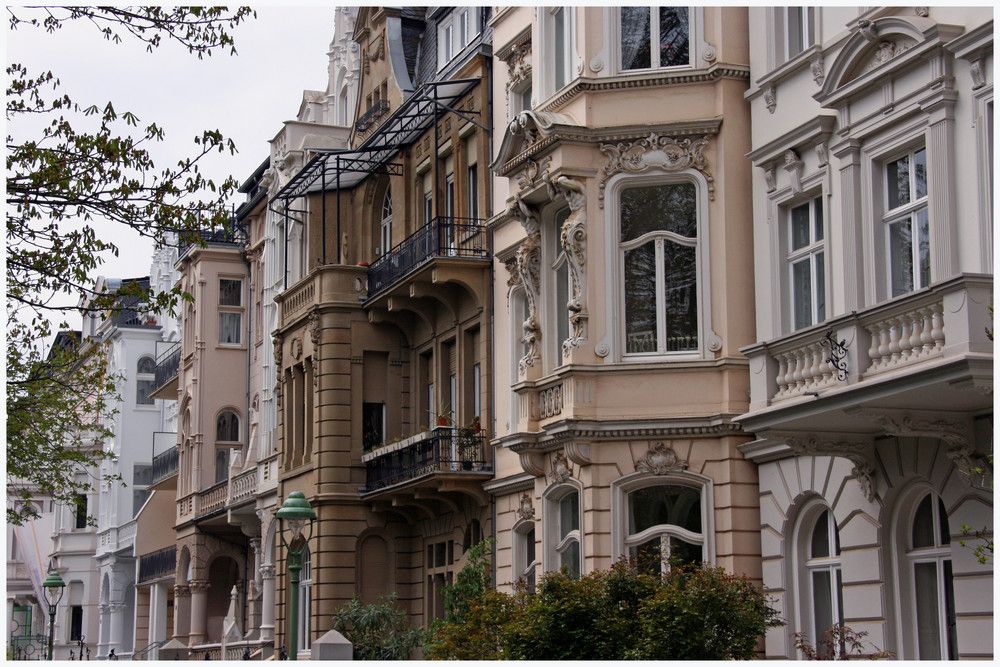Being a student in Bonn
Bonn, the city of German history and fruity little teddy bears (Haribo). This tranquil city on the Rhine was the capital of Germany from 1949 to 1990 and also the Chancellery until 1999 (after the unification of the two Germanies, the capital was moved to Berlin).
In fact, Bonn is a city 2000 years old. You can see many examples of this while traveling around the city. We visited the city during the promotion days of Bonn University. Being an old capital city, one expects a bigger and more crowded city, but what we saw was not at all what we expected.
Bonn has about 310,000 inhabitants and with 40,000 students enrolled, it is an important university location in Germany. The most popular university is the Rheinische Friedrich-Wilhelms-Universität with 38.000 students.
We went to the presentation of this university. Since the presentation was in the city center, we went directly to the center. The building was the former parliament building. The university has 4 other campuses scattered around the city besides this campus with a huge garden. Many events are organized in this garden in summer.

Although the city is the former capital, it is not very crowded. Although it is still a UN (United Nations) city and the center of several ministries, it can be called a quiet city. Since it used to host many politicians in the past, an elite environment has also been formed. The headquarters of Germany’s two giant companies, Deutsche Telekom and Deutsche Post, are also in this city. Deutsche Post built the 163-meter-high Post Tower, which has led to the city being referred to as “Bonn-hattan”. The city is especially proud of its most famous figure, Ludwig van Beethoven, and shows this with the Beethoven Festival. While we were there, we visited the Beethoven house and souvenir shop because of our son’s special interest in classical music.
During its time as capital, the city was overflowing with embassies and foreign diplomats, so international culture has become ingrained in the city. Every year many tourists still visit the city’s sights, the nearby Drachenfels or the Hotel Petersberg in Königswinter, where international conferences are regularly held. There are also more than 5,000 international students in the city. It is true that even if this is not the case, as a Turk you do not feel like a stranger anywhere in Germany.
Cologne is half an hour away, so those who want to feel the atmosphere of a big city can reach what they want in a short time. Some of the students come daily from Cologne. Hofgarten and Rheinaue were popular meeting places for those studying in Bonn. On weekends, rowing, canoeing or water skiing on the Rhine are popular activities among students.
LIFE IN BONN
Bonn is a bit more expensive in terms of living costs. Being the former capital and being very close to a big city (Cologne), it can be considered relatively expensive in terms of food and accommodation despite being a small city. Of course, there are student places as well as luxury restaurants.
In Bonn, Studierendenwerk provides accommodation for around 3700 students in 33 dormitory complexes. However, since 81% of the students here do not live with their families, it is very difficult to find a place in the dormitories. You have to queue up and wait for 1 or 2 years. WG (shared flats) are also common here. However, rents are high due to the high number of Germans who work in Cologne and prefer to live here. The price of a 1 bedroom apartment in the city is around 450 to 750 Euros.

Poppelsdorf and Südstadt are particularly popular with students, despite their high rental prices, as many campuses of the University of Bonn are located in the area. Rents are slightly more reasonable in Kessenich or Beuel on the right bank of the Rhine. The suburbs are also preferable thanks to the ease of transportation provided by the well-developed train and bus network. If you are studying at the University of Bonn, you may also want to consider the neighboring town of Alfter (20 minutes by car, 35 minutes by train) for more affordable apartments for rent.
On the Asta website of the University of Bonn, you will find many details and advertisements for private dormitories, shared accommodation and more.
BONN BY THE NUMBERS
| City Population | 327.258 |
| Number of Students | 40.815 |
| Student/resident ratio | % 12,5 |
| Number of beds provided by Studierendenwerk | 3.694 |
| Rents for accommodation provided by Studierendenwerk | 177-670 € |
Did I help you? If you have any questions, you will probably find the answer on these pages, but you can still contact me at recep[at]recepdayi.com.tr and on my social media accounts. I try to improve my articles according to your feedback, so please send me your comments. Thank you in advance.




